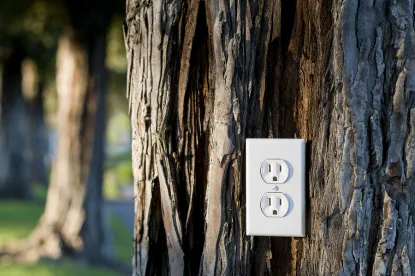CPP litigation update
Twenty seven states and dozens of industry groups comprising almost 150 total identified parties have sued the United States Environmental Protection Agency (U.S.EPA) in the lawsuit captioned West Virginia v. EPA, asserting that the CPP is illegal and seeking a stay on implementation of the CPP pending full consideration of the legal challenges. Wisconsin is one of the states that has joined as plaintiff in the action to block the CPP. Meanwhile, 18 states and various non-governmental organizations have lined up beside the U.S.EPA to defend the rule.
The crux of the legal challenges to the CPP are assertions that (i) the key provision relied upon by the U.S.EPA to develop and promulgate the CPP, Section 111(d) of the Clean Air Act (CAA), does not clearly give the U.S.EPA jurisdiction to effectively regulate energy production and policy at the state level under the guise of restricting carbon dioxide (CO2) emissions; (ii) 111(d) is a rarely used provision and it is not appropriate to grant Chevron administrative deference to the U.S.EPA to interpret application of 111(d); (iii) 111(d) cannot be used to regulate power plants if they are already subject to regulation under CAA Section 112, particularly where an apparent lawmaking “glitch” established two slightly conflicting, but relevant, versions of the CAA in 1990; (iv) considerations of state sovereignty should preclude the federal government from dictating state energy policy; and (v) the CPP is off the mark in regulating state-wide energy production as being subject to so-called “best systems of emission reductions” (BSERs) where opponents assert that such requirements were meant to apply to individual sources.
Driving the opponents’ litigation are their concerns regarding cost and practicality of compliance. States face a requirement to reduce CO2 emissions by approximately 33 percent against a 2012 baseline. For many states that have already made substantial strides in reducing CO2 emissions or whose emissions have already fallen, often due to recessionary impact, this creates issues of practicality. Furthermore, parties challenging the CPP have asserted that the CPP could mean over $200 billion in additional costs nationwide by the year 2030.
As of this writing, the current status of the CPP litigation is that the parties involved in the litigation anticipate a decision from the D.C. Circuit Federal Court of Appeals on the motion for stay by the end of January. U.S. EPA Administrator Gina McCarthy also commented last week that she anticipates a decision from the court “within weeks.” It is Godfrey & Kahn’s understanding that if the D.C. Circuit does not agree to stay the rule, the opponents will move for an expedited briefing schedule to consider the substantive merits of their litigation.
How states are preparing for the CPP
If the D.C. Circuit does not grant the CPP opponents’ motion for a stay, states are on the clock to submit their State Implementation Plans (SIPs) to the U.S.EPA on or before Sept. 6, 2016. States may request and obtain a two year extension at that time provided they can document reasonable progress toward developing a SIP. For states that do not propose a SIP, a Federal Implementation Plan (FIP) will be imposed on the states until they otherwise have a SIP approved.
States that oppose the CPP and that have sued U.S.EPA are literally “all over the map” on developing SIPs. Some, like Arkansas, appear to be prepared to develop “something that’s approvable” in order to qualify for an extension. Others, like Alabama, have indicated that they are doing nothing and are prepared to wait out the D.C. Circuit’s determination on the motion for stay before taking any action. Still another state, North Carolina, also opposing the CPP, has reportedly decided to prepare and submit an intentionally inadequate SIP in order to force the U.S.EPA’s hand and to broaden the context of the litigation. Some states are engaging the affected businesses and utilities in an effort to develop a rational approach to developing their SIPs, while in other states, including Wisconsin, no such multi-party dialogue appears to be occurring while the parties are awaiting the court’s decision on the stay.
What industry and electric energy consumers should be doing
While a stay of the implementation of the rule would defuse the urgency of CPP compliance, many states opposed to the litigation are not relying on the possible grant of the stay and are planning for implementation as a precautionary measure given the tight timelines imposed under the CPP. Like the states mentioned above, businesses and electric energy users (even those in states, such as Wisconsin, that are litigating the CPP) should be engaging with their environmental and energy regulators, at the state and potentially federal levels, to ensure their concerns are understood and considered in the development of SIPs or a possible FIP. For example, a business that foresees the ability to implement energy efficiency or clean energy projects and thus drive lower utility CO2 emissions should be sure that a SIP or FIP includes the ability for the business to realize financial value of those reductions through a CO2 emissions reduction credit (ERC) trading marketplace. Similarly, a business that manufactures a product that will help others achieve energy efficiency and net CO2 emissions reductions should be sure that the SIP or FIP allows for the ERCs to flow to that manufacturer.
On the federal level, a key deadline is looming in this regard, as comments on the draft FIP proposed by U.S.EPA last August are due Jan. 21, 2016. There are numerous possible topics that should be addressed in those comments depending upon the interest of parties, including: whether the FIP should adopt a rate-based or mass-based plan; under what circumstances should biomass be considered a qualified renewable energy resource; under what circumstances, if any, should a business with facilities in many states be able “trade,” to its advantage, emissions reductions at qualified projects located in one state for facilities located in other states; and, should energy efficiency programs qualify for meeting CO2 reduction goals.
Extension of Renewable Energy Tax Incentives
On Dec. 16, 2015, President Obama signed legislation creating or extending very significant tax provisions relating to qualified energy projects, including production tax credit and/or investment tax credit opportunities for wind, biomass, geothermal, hydropower facilities commenced by certain deadlines and, significantly, an extension of the investment tax credit program for solar voltaic or thermal facilities that begin construction before Jan. 1, 2022. Further details regarding the tax credits are available in the newsletter noted above or by contacting a member of the Environment & Energy Strategies Practice Group. Needless to say, for those businesses that may be inclined to consider on-site generation of renewable energy, the tax credits can help make those projects substantially more cost effective. These projects can also serve as an important means of reducing the potential cost impacts of the CPP.
A word about Paris
Finally, as most are aware, a delegation from the Obama office traveled to Paris to participate in the COP21 in Paris in December to address an international agreement on climate change. On Dec. 12, 2015, the U.S. was one of nearly 200 countries that adopted what is hailed as the first full international agreement addressing climate change (the Paris Agreement). The Paris Agreement identifies three goals: (i) contain global temperatures to no more than a 2º Celsius rise, and ideally no more than 1.5º, over pre-industrial levels; (ii) reach peak emissions, before decreases occur, from all participating countries as soon as possible; and (iii) achieve “net zero” greenhouse gas emissions by 2050 (taking into account offsets through forests, carbon sinks, etc.).
Unlike prior attempted climate change agreements, which proceeded from a top-down control framework, the Paris Agreement is based on “bottom-up” commitments from all participants, developed and undeveloped, who agreed to deliver Intended Nationally Determined Contributions (INDCs)reflecting each country’s “highest possible ambition” to CO2 emissions reductions. Participants are required to update and increase the commitments of the INDCs every five years. As of the date of the execution of the Paris Agreement, 188 countries submitted INDCs. Other key elements of the substantive agreement include a commitment by developed countries to assist undeveloped countries with the cost of compliance, initially at $100 billion per year, methods to ensure transparency and accountability and recognition of international CO2 emissions trading opportunities. The Paris Agreement takes effect 30 days after 55 countries representing at least 55 percent of the global emissions have ratified it.
Negotiators for Obama’s team attempted to walk the tightrope between securing functional international progress, on the one hand, and a “treaty-level” commitment that would garner nearly certain congressional rejection, on the other. A significant issue that remains is whether the United States’ obligation to any share of the $100 billion committed to less developed nations requires the consideration and (unlikely) approval of the Republican Congress. Moreover, critics of the Paris Agreement have noted that it is non-binding and that the initial INDCs do not begin to go far enough to achieve the 2º Celsius cap. However, COP21 believers reply that the culture of mutual accountability and responsibility will counterbalance any lack of legally binding standard, and that the momentum of signatories’ INDC commitments will help to realize the temperature containment goals.
Conclusion
The status quo in the United States related to the CPP is somewhere on the continuum between litigation and SIP preparation. Even so, with the national attention to CO2 emissions generated by the CPP and, now globally, by the Paris Agreement, there is an increasing awakening to an electric energy production culture that will be less fossil fuel dependent and instead reliant upon renewable energy sources. If the CPP opponents’ motion for stay of the rule is granted, to be determined likely sometime in the next month, focus will shift from implementation of the rule to interpretation of its legality, a fight that will likely roll forward for years, ultimately and likely to the United States Supreme Court. On the other hand, if the CPP rule is not stayed, time will be at a premium (i) for states, to identify measures to comply with the CPP’s aggressive goals and, (ii) for all electric energy producers and users, to attempt to maximize the potentially significant opportunities to benefit under the CPP while minimizing its potentially significant costs.





 />i
/>i

